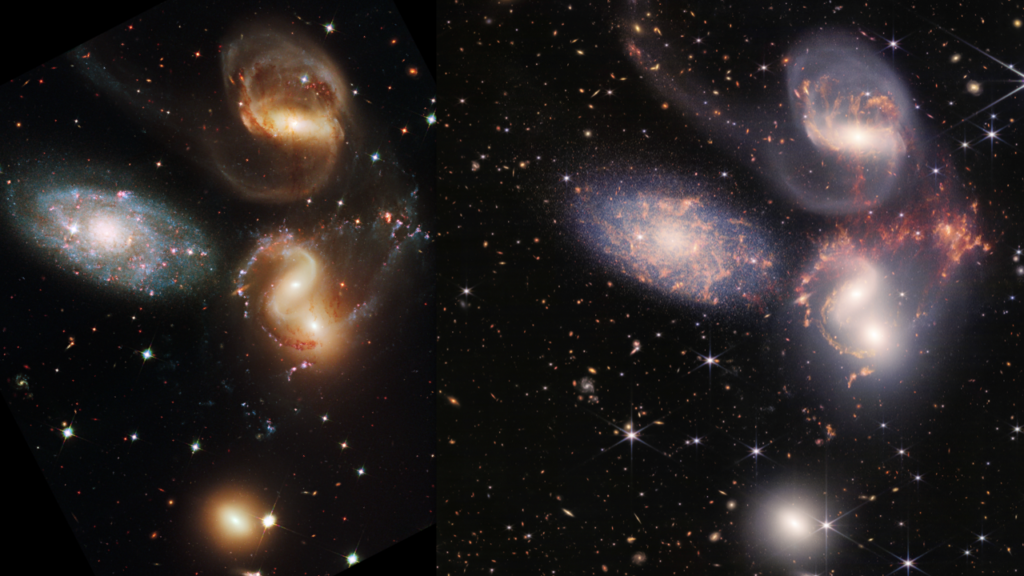Astrophysicist Hugh Ross reports:
It’s been widely rumored that the initial images from the JWST have repudiated the big bang creation model of the universe. This rumor was sparked in an online article by Eric Lerner, author of the book, The Big Bang Never Happened.1 In this book, Lerner, a committed atheist, claimed that electromagnetism, not gravity, dominates, and has dominated, the dynamics of the universe. Shortly after the book was released, I debated Lerner on the big bang on a radio show. In the fourth edition of The Creator and the Cosmos I cited several measurements establishing that galactic and intergalactic magnetic fields are much, much too weak to sustain any of Lerner’s speculations.2
In Lerner’s online article, he wrote concerning the initial JWST images that “to most professional astronomers and cosmologists, they are also extremely surprising—not at all what was predicted by theory. In the flood of technical astronomical papers published online since July 12, the authors report again and again that the images show surprisingly many galaxies, galaxies that are surprisingly smooth, surprisingly small and surprisingly old. Lots of surprises, and not necessarily pleasant ones. One paper’s title begins with the candid exclamation: “Panic!”3 Lerner concluded, “The hypothesis that the JWST’s images are blatantly and repeatedly contradicting is the Big Bang Hypothesis that the universe began 14 billion years ago in an incredibly hot, dense state and has been expanding ever since.”4

The preprint paper whose title began with the word “Panic!” does not, as Lerner implies, communicate either in the abstract or the paper itself any panic or worry about the big bang creation model.5 The first part of the paper’s title is a pun. It reads “Panic! At the Disks,” which is a pun on the name of a pop band, Panic! at the Disco. The sixteen authors, including Rogier Windhorst, who has endorsed one of my books on the big bang, express confidence that the JWST will deliver a more refined and detailed big bang creation model. That is, they express their belief that the JWST will provide more, not less, evidence for the big bang.
Do these recent JWST discoveries debunk the big bang? Not at all. There are many big bang creation models that predict exactly these discoveries. It’s even possible that the discoveries do not refute any big bang creation models. Billion-solar-mass compact galaxies in the universe may yet prove to be relatively rare. Likewise, large, well-formed spiral galaxies may prove to be relatively less abundant in the early universe than what the initial JWST images show. Such galaxies are the easiest ones to detect in the early universe. Therefore, we shouldn’t be surprised that they show up in the first JWST images of the early universe.
As an example of such early, unexpected discoveries, I’m old enough to remember the discovery of the first quasar, 3C 273. It was so bright and only 2.4 billion light-years away that astronomers first deemed it a problem for several big bang creation models. Such models predicted that quasars like 3C 273 should be rare. Well, six decades later, 3C 273 has indeed proven to be rare. It still ranks as the optically brightest quasar in the sky and one of only a few quasars less than 2.5 billion light-years away.
The JWST’s initial images do show that the most distant galaxies are smaller in size than nearby galaxies. However, this is not a problem for the big bang as Eric Lerner has claimed. It’s what all big bang creation models predict. The farther away astronomers observe, the farther back in time they see, owing to the finite velocity of light. In big bang cosmology, many of the first stars form clusters. These first-formed star clusters merge to form larger star clusters. The larger star clusters merge and pull in gas clouds to form dwarf galaxies. Many of the dwarf galaxies merge to form larger galaxies. Thus, big bang models predict that while dwarf galaxies will remain the most common galaxy type in the universe, the number and sizes of galaxies will tend to increase as the universe ages.
Primary Scientific Missions
The rationale for constructing and launching the JWST was for it to achieve at least six primary scientific missions which, to date, no other telescope could achieve. These six primary missions are:
- To determine how the universe’s first stars form, the relative sizes of the first stars, and the number density of the first stars
- To determine how and when the first galaxies form and what types of galaxies comprise the first galaxies
- To determine in specific detail how, when, and where stars form in the present universe
- To determine the chemical composition of the atmospheres and hydrospheres of exoplanets of various types
- To determine how planetary systems form and evolve
- To search for more carbonaceous molecules in giant molecular clouds that may serve as the “building blocks of the building blocks” of life and to measure the relative abundance of these molecules
Attaining these objectives will yield far more evidence of the structure and history of the universe. That evidence will show which cosmic creation models are correct.
See the full article at Reasons.org.